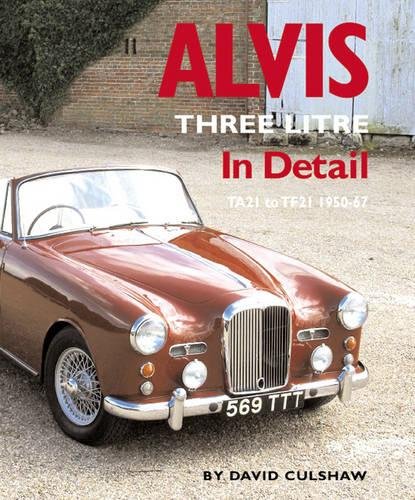
From its launch in 1950 to its demise in 1967, the Alvis Three Litre enjoyed a deserved reputation for effortless performance, exceptional surefootedness and stability, a high degree of driver friendliness, and irreproachable quality of construction. It was considered a rather exclusive car, coming as it did from a maker whose products always had a certain individuality. In addition, there remained through successive models something reassuringly traditional about its styling in both saloon and drophead forms; while never outdated, it displayed a timeless, discreet dignity unmoved by the more frivolous vagaries of fashion. All the while, in the background but ready to serve when called upon, was the Alvis works, whose concern for its cars and their owners was exemplary.Throughout production, the Three Litre was based on the same chassis and was powered by the same engine. This was a handsome and efficient short-stroke six-cylinder, conceived in order to provide the driver with ample power over a very wide rev range. Starting with an output of 83bhp in the early TA21, this robust unit was progressively developed to supply 150bhp in its final TF21 form while retaining the turbine smoothness, reliability and lack of temperament that it had become celebrated for. It was perfectly matched to its chassis and running gear, and those who have driven a Three Litre at speed will find the dynamic qualities of the contemporary rivals from Bentley or Jaguar rather less likeable.This book opens with an exposition of the background that led to the companys introduction of the Three Litre in 1950. Then comes a detailed technical analysis of the TA21, covering all aspects of the chassis, running gear, engine and transmission. This sets the scene for the chapters which follow, on the short-lived TB21 sports tourer, the TC21 and the uprated TC21/100, the Graber-inspired TC108G, the outstandingly handsome TD21 Series I and II, the TE21 and the TF21.Each of these receives comprehensive treatment, including differences from previous models, production changes and full chassis number number listings, along with notes on famous owners and screen appearances. The author provides extensive information on the coachbuilders who supplied Three Litre bodies, including Mulliners, Tickford, Graber, Willowbrook and Park Ward, and there are chapters devoted to the Alvis-powered Healey G Series sports car, the aborted Issigonis-designed Alvis TA350, and the ownership and use of Alvis Three Litre models today.Five outstanding examples of the cars have been specially photographed for this book and are featured in some 70 colour shots. There are also more than 140 black-and-white illustrations drawn from archives as well as from Alvis sales and publicity material. Devoted exclusively to the Three Litre, this book offers an in-depth examination of these excellent cars to provide a store of information for the many owners who care passionately about them, and serve as a tribute to the men who made them.
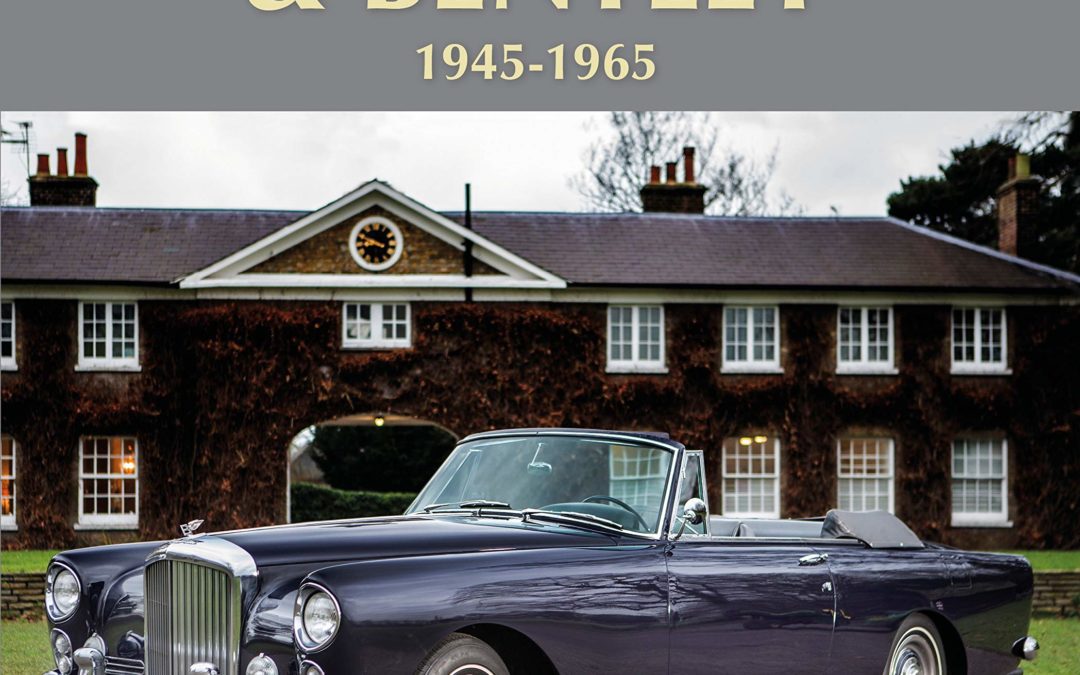
Rolls-Royce and Bentley relied upon standardised body designs after 1945, but for the next two decades both marques also supplied chassis frames separately, and it was possible to have these clothed with coachwork by bespoke coachbuilders like, for example, Mulliner, Park Ward and James Young in Britain, or Graber, Farina and Franay in Europe.
Many buyers took this route, and this highly illustrated book bears witness to the wide variety of styles that were built in this fascinating period. Chassis number lists for each coachbuilder, both in Britain and overseas, identify their creations, to make this a comprehensive and essential companion for anyone interested in Rolls-Royce and Bentley in the postwar era. Coachwork on Rolls-Royce and Bentley, 1945-1965 joins the author’s recent work Coachwork on Derby Bentleys 1933-1940 in our list.
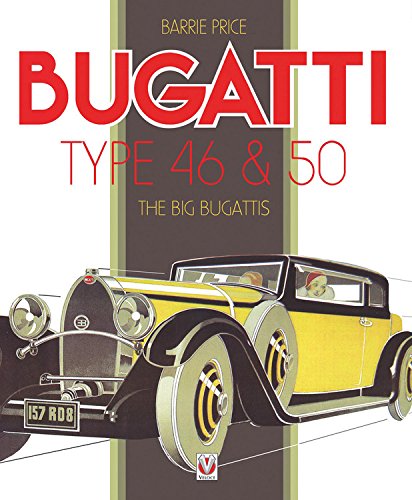
The Bugatti Type 46 was announced in the autumn of 1929. The new Bugatti chassis, at almost twelve feet in length and powered by an 8-cylinder engine of 5300cc, was intended to be the basis of a superlative large luxury car – and so it proved to be. Bodied by the greatest European coachbuilders to the highest standards of quality and style for rich and discerning clientele, the T46 was in many ways a smaller Royale and is said to have been the favourite of Ettore Bugatti. Later, an optional supercharger became available to create the 46S model.
In 1930 the Bugatti Type 50 superseded the T46. The new model still used the T46s chassis and most of its running gear, but featured a new, high-performance, twin-overhead-camshaft engine of just under 5-litre capacity. This supercharged unit gave the T50 very spirited performance for such a large and luxurious car, placing the model firmly in the Grand Sport category.
1931 saw a team of T50s take part in the Le Mans 24-Hour race, but the cars were withdrawn before the race finished after Rosts car crashed, tragically killing a spectator in the process.
In total, fewer than five hundred T46 and T50 Bugattis were built in but, with the obvious exception of the Royale, these cars represented the pinnacle of luxury car manufacture for the famous Molsheim marque.
See fabulous coachbuilt bodies by Gaston Grummer, Chapron, Ghia, James Young, Van Vooren, Weymann, Billeter & Cartier, Gangloff, Joss Neuce, Mllion-Guiet, Freestone & Webb, Van den Plas, Arthur Mulliner, Kellner, Lancefield, Corsica, Visse et Haf, Ottin, Brainsby-Woollard, Sodomka, Graber, Weinburger, Abbots of Farnham as well as Bugattis standard bodies.
Barrie Prices work is a concise history of the Bugatti Types 46 and 50, an engineering analysis and the most thorough survey yet of the many coachbuilt bodies fitted to these famous chassis. Appendices include a complete chassis listing and reproductions of promotional material produced by Bugatti, Bugatti agents and others.
“… a galaxy of superb coachbuilt and standard bodies on both chassis …” – The Automobile
“Barry price writes with great authority … a fine collection of rare photographs and period advertising material …” – Classic Car Weekly
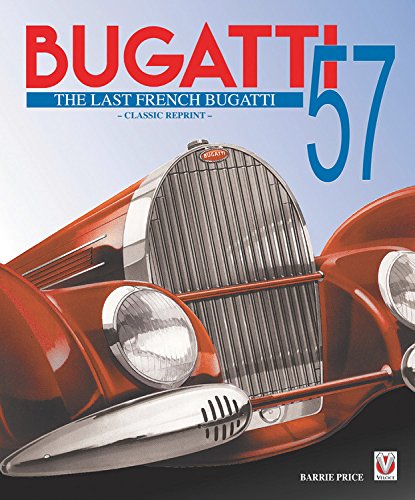
If I was asked to give my opinion as to the best all-round super-sports car … I should, without hesitation whatever, say it was the 3.3 [T57] Bugatti.” – Sir Malcolm Campbell, The Field, September 4th, 1937.
The magnificent Type 57 was the final flowering of the genius of Ettore Bugatti and Jean Bugatti, and was the last truly new model from the Bugatti factory in Molsheim, France.
Conceived as a fast, luxurious and exclusive touring car, the T57 was in production from 1934 to 1939, and was so successful that the model accounts for around 10 per cent of all Bugattis built at Molsheim.
Not only a sales success, the T57 formed the basis of a Grand Prix model, a twice Le Mans-winning sports racing car and, in road-going form, wore some of the most beautiful bodies ever created by the great coachbuilders of the vintage period. See the work of: Letourneur & Marchand, Graber, Gangloff, James Young, Corsica, Van Vooren & Saoutchik, Vanden Plas, Figoni & Falaschi, Sodomka, Henri Labourdette, Fernandel & Darren, Franay, Guillore, Malyby, Tuschner, Worblaufen and Rice & Harper. Also the standard bodies: Atalante, Galibier, Stelvio, Ventoux, Atlantic and Aravis.
Barrie Prices work is a concise history of the T57 and its derivatives the T59, T64 and T101, an engineering analysis, and the most thorough survey yet of the many coachbuilt bodies fitted to this famous chassis. The reader will also find appendices crammed with detailed and valuable information ranging from chassis numbers and original owners to sales and service statistics.
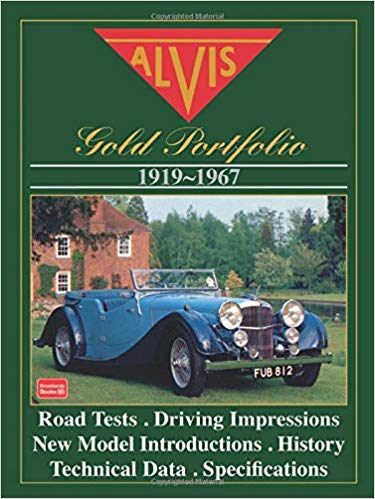
The Alvis Gold Portfolio contains contemporary reports featuring road tests, introductory articles, special coachwork, technical and performance data, with a small historical section. During the 1920s and 1930s, the Alvis company offered a broad model range in which engineering innovation was to the forefront. Models covered are: (pre-war) Alvis 12-50, Straight-eight racer, Alvis 14-75, Alvista saloon, Alvis Atlantic saloon, Front-Drive Alvis, Alvis Silver Eagle, Alvis 12-60, Alvis Speed Twenty, Alvis Mayfair DHC, Firefly saloon, Crested Eagle, Firefly Twelve, Alvis 16, Alvis Silver Eagle 16, Alvis 3.5-litre, Alvis Speed Twenty-five, Alvis Twenty-five Limousine, Alvis 4.3-litre saloon, Alvis Crested Eagle 25, Alvis 12/70, Alvis Silver Crest, Alvis 14, (post-war) Alvis 14 Sports, Alvis 3.0-litre saloon, Alvis 3.0-litre DHC, Alvis TC 21/100, Alvis Graber saloon, Alvis 3-litre Park Ward, Alvis TD21, Alvis TD21 Auto and Alvis TE21 Series III and IV.







